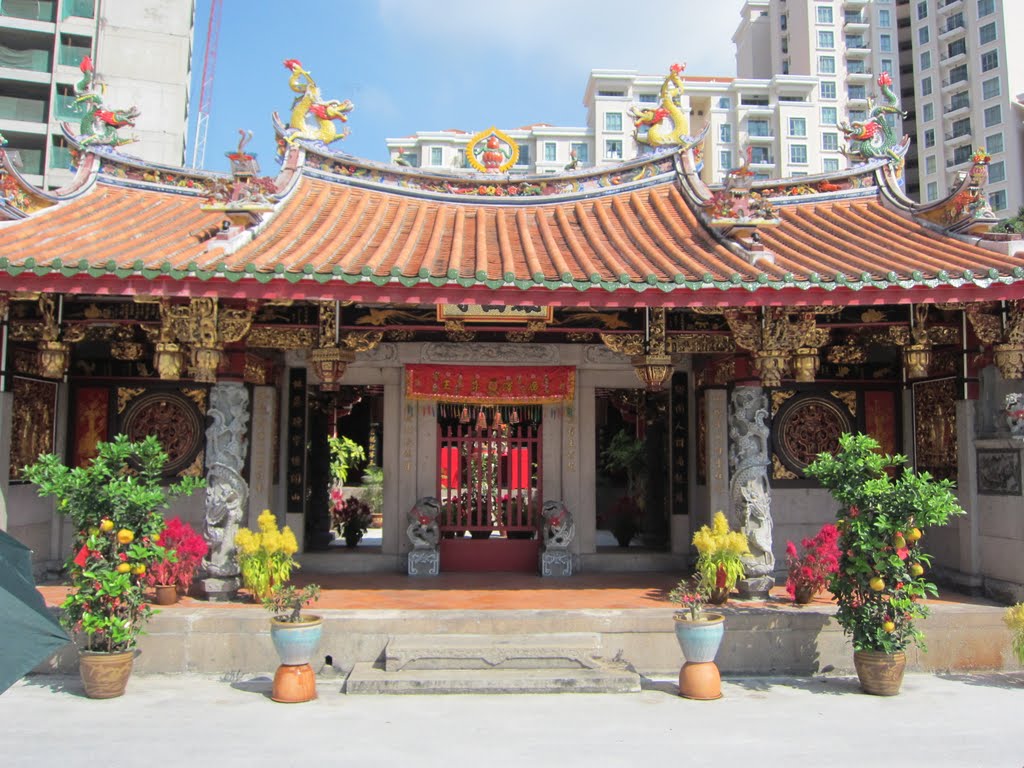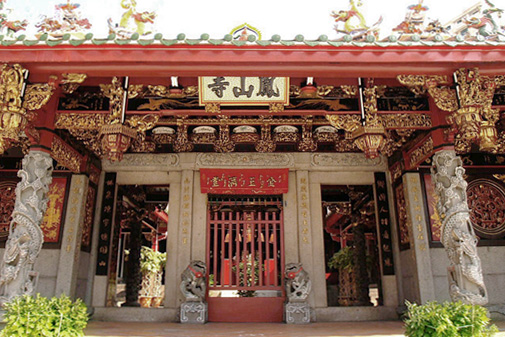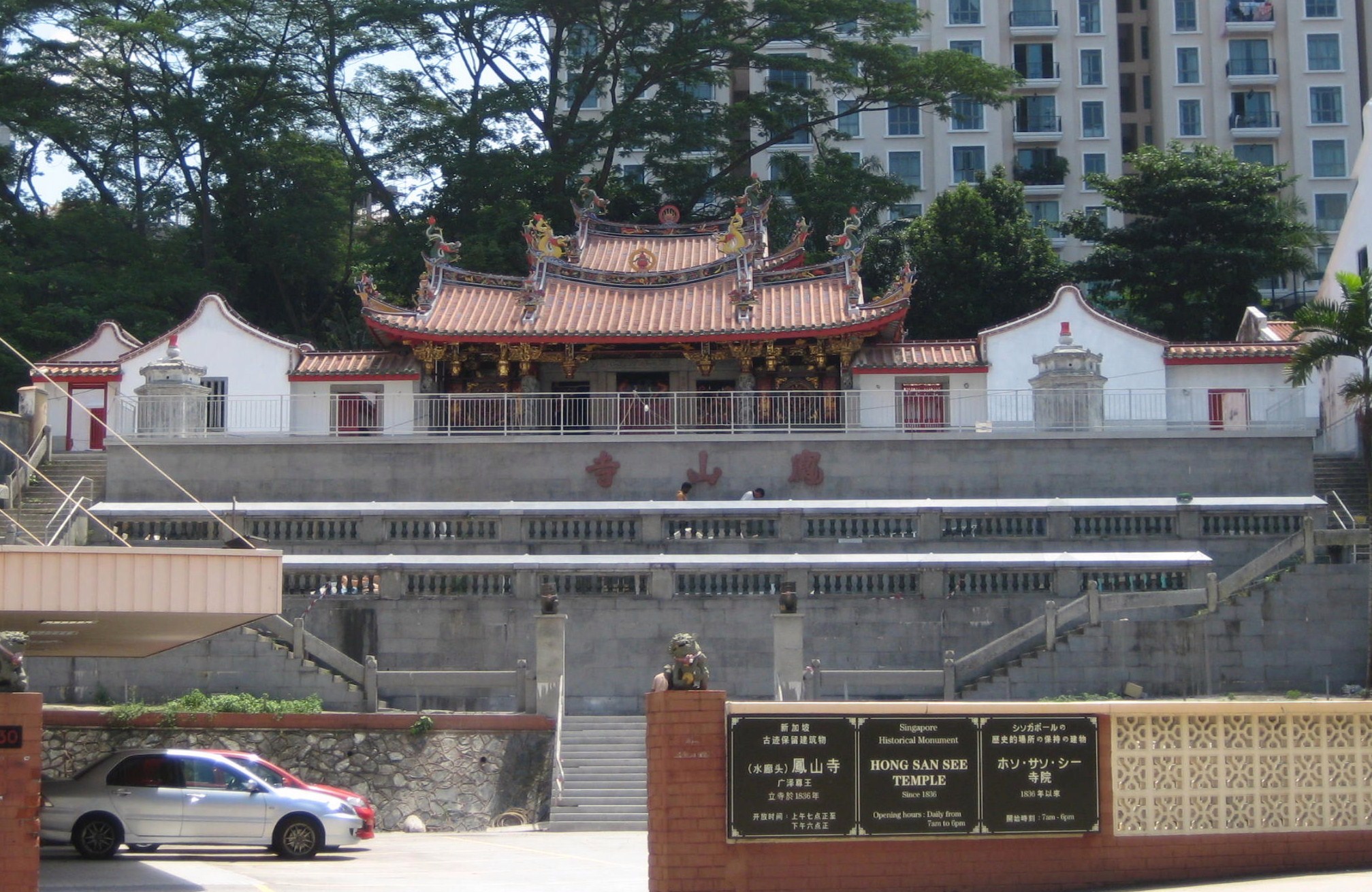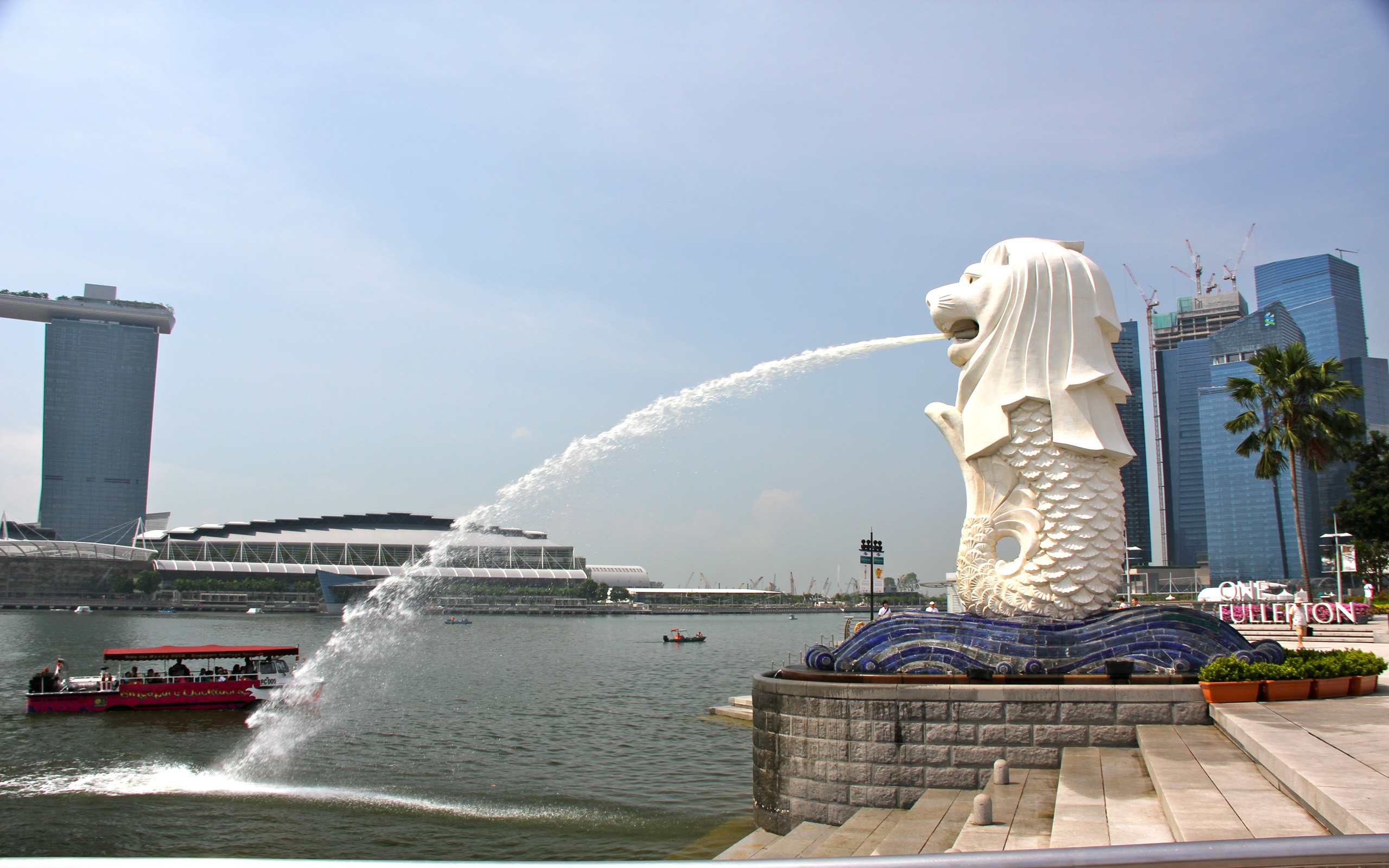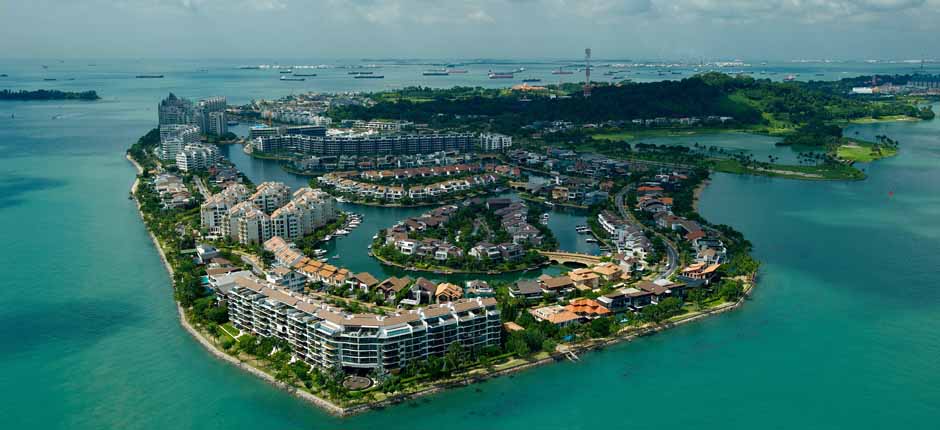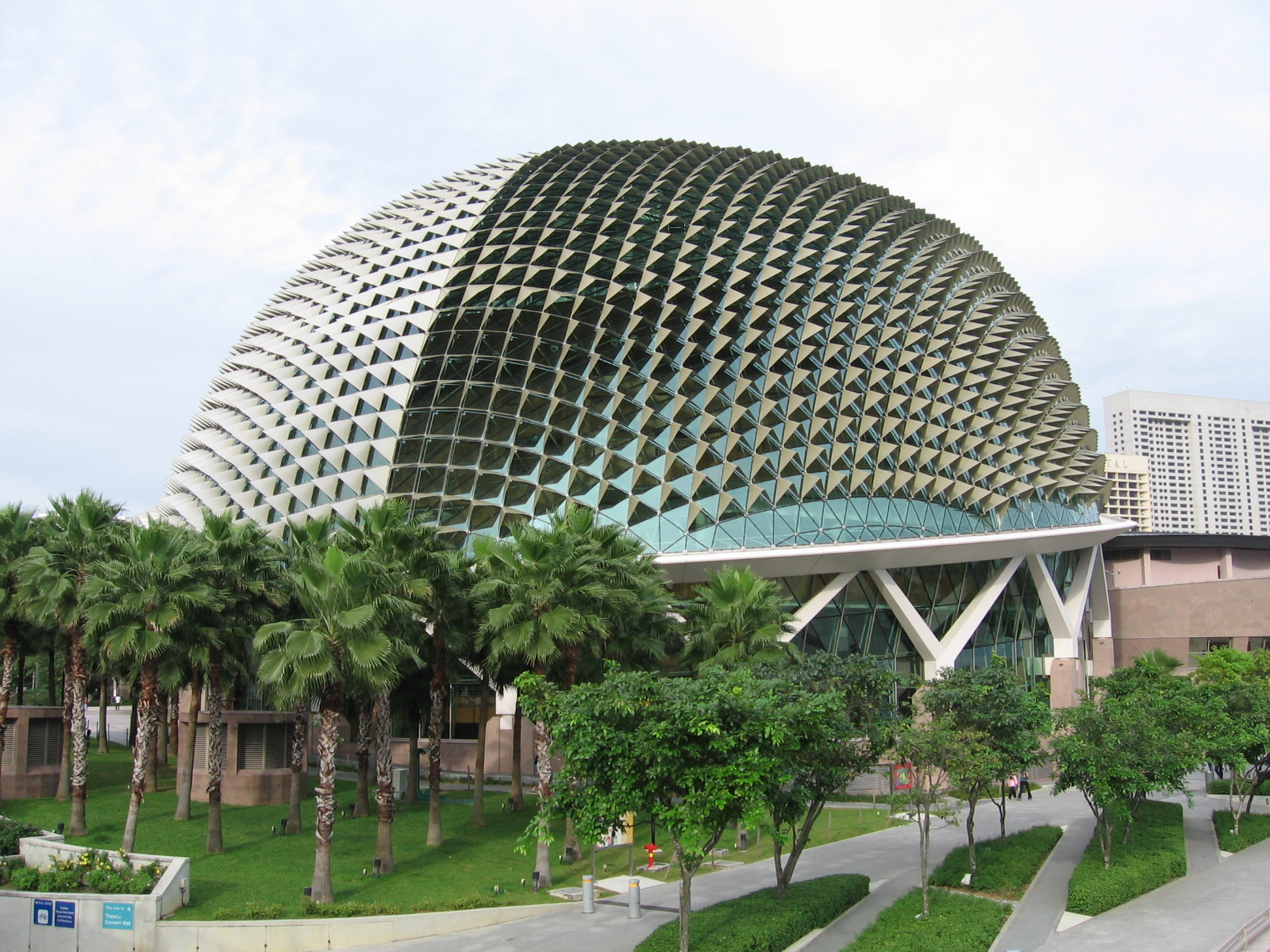Singapore /Singapore /Singapore
Sight Address : 31 Mohamed Sultan Road, Singapore 238975, Singapore.Edit
Detail InformationEdit
Hong San See (Chinese: 凤山寺; pinyin: Fèngshān sì; Pe̍h-ōe-jī: Hōng-suann-sī) is a Chinese temple in Singapore, and is located at Mohamed Sultan Road in the River Valley Planning Area, within the Central Area, Singapore’s central business district.
Hong San See Temple was constructed between 1908 and 1913, erected by migrants from Nan An county in Fujian province with materials imported from China. Built on a small hill, the temple once overlooked the sea. The temple’s vicinity now mainly houses bars, restaurants and expensive apartments.
Singapore Lam Ann Association manages the temple. The Hong San See Temple was designated as a national monument in 1978. In 2010, it was also honoured with the Award of Excellence in the 2010 UNESCO Asia-Pacific Heritage Awards for Cultural Heritage Conservation. The façade and the interior of the temple have gone through numerous restorations, with the first in 1868 when the old temple was at Tanjong Pagar area. Apart from Guang Ze Zun Wang, other deities worshipped here include Buddha and Guan Yin, the Goddess of Mercy.
HistoryEdit
The original temple to Guangze Zunwang (广泽尊王) was built in 1829 on Mount Wallich in Tanjong Pagar, and was erected by migrants from Nan An county in Fujian province of China. In 1907, the land was acquired by the government for reclaiming Telok Ayer Bay and the temple trustees were given compensation of $50,000. The temple trustees used the money to buy land on a 999-year lease on Mohamed Sultan Road from Sam Tomlimson who was the Municipal Engineer.The name of the temple means “Temple on Phoenix Hill”. Sited on the side of Institution Hill, the temple was situated on high ground with a view of the sea. According to the principles of Chinese geomancy, this is a prime spot for a temple. The construction of the temple began in 1908 with materials imported from China. The chief director of the temple’s Board was Lim Loh, the father of World War II hero Lim Bo Seng. The temple was completed in 1913 at the cost of $56,000. It was renovated once in 1934 and again in 1962. In 1970 renovations to the temple were not done according to restoration guidelines and several features were removed. These are to be restored to make the temple faithful to its original early twentieth century architecture. One major change, now likely to have been removed, was the addition of ornate carvings painted in gold all along the trusses of the temple.As with some of the other Chinese temples in Singapore, its premises were used as a school for children from nearby villages. Called Nan Ming School, it was closed after ten years when it ran into financial difficulties.Today, Hong San See has lost its view of the sea, blocked by high-rises which now surround it. However, it remains on high ground, and to reach the temple, devotees have to climb a long flight of stairs.Hong San See Temple was gazetted as a national monument on 10 November 1978.Extensive renovations were carried out from 2006 to 2010. In 2010, the temple was given the Award of Excellence for the UNESCO Asia-Pacific Heritage Award for Culture Heritage Conservation.
Must SeeEdit
Attraction
Visiting TimeEdit
Daily
Closed OnEdit
N.A.
Best Season to VisitEdit
June to July and November to December.
Best Time To VisitEdit
N.A.
Time Required for SightseeingEdit
N.A.
Ticket Required : No Edit
Individual National Adult : N.A.
Kids : N.A.
Individual Foreigner Adult : N.A.
Kids : N.A.
Still Photo Camera : N.A.
Video Camera : N.A.
Guide Required : No Edit
Approximate cost: N.A.
Dress Code (If Any) : No Edit
Dress Require: N.A.
Restaurants NearbyAdd / Edit
How to ReachEdit
Taxi : Taxis are generally very hard to get during peak hours (Mon-Fri 7:00am – 9:30am and Mon-Sat 5:00pm – 8:00pm) and on rainy days. If you are at a hotel, have conceirge call you a taxi. If you are out about town and have access to a cell phone- calling for a taxi will cut your wait time by 20 to 30 minutes. All taxis are fitted with meters; all are air conditioned; the majority of the taxis are 5-seaters; about 90% of taxis have radiophones; call booking is done via GPS or digital voice dispatch. All passengers must fasten their seat belts by law.
For taxi Booking fee is SGD $2.3. Minimum fare for taxi is SGD $3 for first 1Km. Fare above minimum fare until 10Km is SGD $0.55 per Km. Fare above 10Km is charge SGD $0.628 per Km. Taxi Waiting charges per hour is SGD $17.6. Peak Hours charges is diffrent.
Bus : Public buses run daily from 5.30am to midnight. Extended night services cost slightly more (a flat rate ranging from $1.50-$3.00). Otherwise, most fares depend on distance travelled and range from 67 cents to $1.58 for air-conditioned comfort (almost all public buses in Singapore have air-conditioning today). There are also “feeder” bus services that charge a flat rate of 67 cents. Each bus should not take more than 15 to 20 minutes to arrive at the bus stop.
Train : Singapore MRT system is very well connected to different parts of Singapore and very clean! If you have the time and plan to explore around little Sunny island, get the the Singapore Tourist Pass!
It runs 6am-12mn, fares start at S$1 (70cents in EZ link). Tickets can be purchased in all MRT stations. You just have to insert your money through the ticket machine. Rush hour’s usually 7am-9am, 11am-2pm and 4pm-7pm.
Air : Changi Airport is the country’s main airport. From the airport there are a number of ways to get into the city:
Taxi is easiest – simply follow the signs after clearing customs. Meters are always used in Singapore and prices are reasonable. A trip to the city during the day will be between $20-$30 including $3-5 airport surcharge. An additional 50% surcharge applies between midnight and 06:00.
Limousines charge a flat $50 to anywhere in the city and are a pretty good deal after midnight, as you can skip the queue and avoid the surcharge. The same pricing applies to chartering van-sized MaxiCabs, which are good for large families or if you have lots of baggage.
Shuttle – Shared six-seater MaxiCab shuttle service to designated areas/hotels costs $7 and can be booked in advance or in the arrivals hall. 6AM-2AM, every 15-30 min.
Subway – MRT trains run from a station between T2 and T3, but you’ll need to change trains at Tanah Merah to a city-bound train: just exit through the left hand side door and cross the platform. The 30 min ride to City Hall station costs $1.90 plus a refundable $1 deposit, and trains run 05:31-23:18.
Bus – Bus terminals can be found in the basements of T1, T2 and T3. 06:00-23:59 only. Fares are less than $2.00, exact fare required (no change given) if you pay cash.
Others : N.A.
Things to CarryEdit
Safety / WarningEdit
- Please be advised that all bags and personal items are subject to inspection.
HelplineEdit
- Police: 999
- Emergencies/Ambulance/Fire Brigade: 999
- Police Hotline: 1800 353 0000
- Non-emergency ambulance: 1777
- Flight Information (24-hours): 1800-542 4422
- Tourism Information (24-hours): 1800-736 2000
